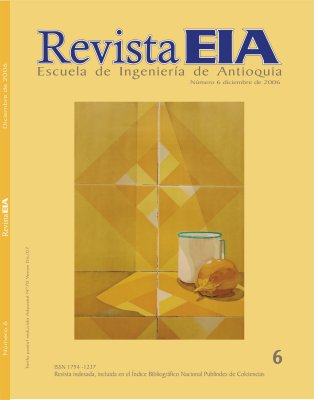ESTUDIO COMPARATIVO DE DUREZA EN DIENTES ARTIFICIALES FABRICADOS CON DIFERENTES TIPOS DE RESINAS ACRÍLICAS
ESTUDIO COMPARATIVO DE DUREZA EN DIENTES ARTIFICIALES FABRICADOS CON DIFERENTES TIPOS DE RESINAS ACRÍLICAS


This work is licensed under a Creative Commons Attribution-NonCommercial-NoDerivatives 4.0 International License.
Copyright statement
The authors exclusively assign to the Universidad EIA, with the power to assign to third parties, all the exploitation rights that derive from the works that are accepted for publication in the Revista EIA, as well as in any product derived from it and, in in particular, those of reproduction, distribution, public communication (including interactive making available) and transformation (including adaptation, modification and, where appropriate, translation), for all types of exploitation (by way of example and not limitation : in paper, electronic, online, computer or audiovisual format, as well as in any other format, even for promotional or advertising purposes and / or for the production of derivative products), for a worldwide territorial scope and for the entire duration of the rights provided for in the current published text of the Intellectual Property Law. This assignment will be made by the authors without the right to any type of remuneration or compensation.
Consequently, the author may not publish or disseminate the works that are selected for publication in the Revista EIA, neither totally nor partially, nor authorize their publication to third parties, without the prior express authorization, requested and granted in writing, from the Univeridad EIA.
Show authors biography
Existen en el mercado dientes artificiales a base de resina acrílica convencional, compuesta o IPN (interpenetrating polymer network). Cuando se comparan los dientes de resina acrílica con los dientes naturales, puede observarse que existe una diferencia significativa en algunas de sus propiedades. Una de estas es la dureza. En el presente proyecto, se comparó la dureza superficial Knoop de dientes acrílicos fabricados con diferentes tipos de resinas a base de PMMA (polimetilmetacrilato), con el fin de determinar si existen diferencias significativas entre ellos (ANOVA p < 0.05) y establecer si el tipo de resina acrílica empleada puede ser una alternativa para el mejoramiento de dicha propiedad en los dientes artificiales, de forma que sea más similar a la de los dientes naturales. Como resultado, se encontró que los dientes artificiales fabricados con resinas microrrellenas poseen mayor dureza que los de IPN o resina convencional. Sin embargo, aún distan de manera significativa de tener la misma dureza que el diente natural (esmalte 270-350 KHN y dentina 50-70 KHN).
Abstract: There are available artificial teeth made of three types of acrylic resin: conventional, IPN (interpenetrating polymer network) and composite. When the properties of these acrylic teeth are compared with the natural ones, a significant difference in the properties is observed, for instance, their hardness. In this project the superficial Knoop hardness of acrylic teeth made of different type of PMMA acrylic resin was compared. The purpose was to determine whether exists a significant difference between them and whether the type of acrylic resin used could be an alternative for improving the hardness of these implants. As a result, it was found that the teeth made of microfilled composite acrylic have more hardness than the ones made of conventional or IPN acrylic resin. Despite of this, they still have a very small hardness value when compared with the natural teeth (enamel 270-350 KHN and dentin 50-70 KHN).
Article visits 334 | PDF visits 143
